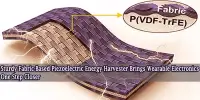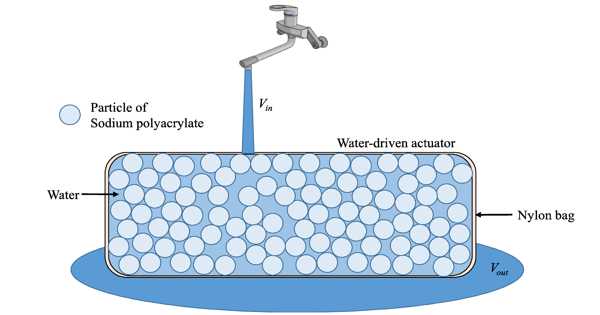There has never been a material that adapts its insulating characteristics to the environment, despite decades of improvement in fabrics with high-tech thermal properties that keep marathon runners cool or mountain trekkers warm. Until now.
Researchers at the University of Maryland have developed a fabric that can automatically control how much heat is transmitted through it. The fabric allows infrared radiation (heat) to pass through when the environment is warm and damp, such as when it is close to a sweating body.
The cloth decreases heat loss when the environment gets drier and cooler. The Science magazine published a report on the development on February 8, 2019 issue. The cloth was made by the researchers using specially designed yarn that was covered in conductive metal.
The yarn strands condense and activate the coating when it’s hot and humid outside, which alters how the cloth reacts to infrared light. They call the process of infrared radiation acting as a tunable blind to transmit or block heat, “gating” the radiation.
“This is the first technology that allows us to dynamically gate infrared radiation,” said YuHuang Wang, a professor of chemistry and biochemistry at UMD and one of the paper’s corresponding authors who directed the studies.
This innovative textile’s basic yarn is formed from fibers of two different synthetic materials, one of which repels water and the other of which absorbs it. Carbon nanotubes, a unique type of lightweight, carbon-based, conductive metal, are coated on the strands.
Textiles were known that increase porosity in response to sweat or increasing temperature, as well as textiles that transmit the infrared radiation associated with body temperatures. However, no one before had found a way to switch both the porosity and infrared transparency of a textile so as to provide increased comfort in response to environmental conditions.
Professor Ray Baughman
The components in the fibers resist and absorb water, so when they are exposed to humidity, like that found around a sweating person, the fibers distort. Two things happen as a result of the distortion of the yarn strands.
It starts by allowing the fabric’s pores to open. Due to the heat being able to escape, this produces a slight cooling effect. The electromagnetic coupling between the carbon nanotubes in the coating is changed, which is the second and most significant change.
“You can think of this coupling effect like the bending of a radio antenna to change the wavelength or frequency it resonates with,” Wang said. “It’s a very simplified way to think of it, but imagine bringing two antennae close together to regulate the kind of electromagnetic wave they pick up. When the fibers are brought closer together, the radiation they interact with changes. In clothing, that means the fabric interacts with the heat radiating from the human body.”
The cloth either enables infrared light to pass through or prevents it, depending on the tuning. Before people know they are getting hot, the garment may already be cooling them off because of the almost rapid reaction. On the other hand, the dynamic gating mechanism operates in reverse as a body cools down to trap heat.
“The human body is a perfect radiator. It gives off heat quickly,” said Min Ouyang, a professor of physics at UMD and the paper’s other corresponding author. “For all of history, the only way to regulate the radiator has been to take clothes off or put clothes on. But this fabric is a true bidirectional regulator.”
This is the first textile that has been demonstrated to be able to control heat exchange with the environment, according to the Science publication.
“This pioneering work provides an exciting new switchable characteristic for comfort-adjusting clothing,” said Ray Baughman, a professor of chemistry at the University of Texas who was not involved in the study.
“Textiles were known that increase porosity in response to sweat or increasing temperature, as well as textiles that transmit the infrared radiation associated with body temperatures. However, no one before had found a way to switch both the porosity and infrared transparency of a textile so as to provide increased comfort in response to environmental conditions.”
Before the fabric can be sold, more study is required, but the researchers claim that the base fiber’s components are easily accessible, and the carbon coating may be added with little difficulty during the usual dyeing process.
“I think it’s very exciting to be able to apply this gating phenomenon to the development of a textile that has the ability to improve the functionality of clothing and other fabrics,” Ouyang said.
















